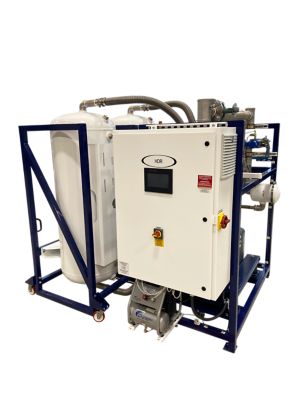The Carbon Footprint of Healthcare and Our Ambitions to Reduce it
December 19, 2024
In healthcare, medical gases are vital. They play a critical role in patient care, from anesthesia to respiratory therapy. However, as a leader in medical gas systems, we recognize the importance of understanding and mitigating the environmental impact associated with some of these essential gases. This article explores the environmental footprint of medical gases and how we are committed to sustainable practices in the healthcare industry.
The role of Medical Gases in healthcare
Medical gases such as oxygen, nitrous oxide, medical air, carbon dioxide, helium, and nitrogen are indispensable in various medical procedures. Here’s a quick overview of their uses:
Oxygen (O2): Used in respiratory therapy, ventilators, anesthesia, and life support.
Nitrous Oxide (N2O): Can be used as analgesic pain management and a carrier gas for halogenated anesthetics.
Medical Air: Supports respiratory therapy.
Carbon Dioxide (CO2): Employed in laparoscopic surgeries for insufflation.
Helium (He): Used in MRI machines and as a coolant for superconducting magnets.
Nitrogen (N2): Used for operation and surgical tools in operating rooms and creates inert atmospheres for specific medical procedures and preserves biological samples.
While these gases are essential for patient care, their production, usage, and disposal have environmental implications. A significant concern is the greenhouse gas emissions associated with certain gases, particularly Nitrous Oxide (N2O), which has a global warming potential of approximately 298 times that of CO2, it has existed in the atmosphere for 114 years, and also contributes to ozone layer depletion. Additionally, the production and purification of medical gases require substantial energy, which increases the overall carbon footprint of healthcare facilities. Resource depletion is another pressing issue, especially with non-renewable gases like Helium, whose limited availability underscores the necessity for sustainable use and recycling efforts.
Another commonly used gas is Halogenated drugs, mainly used for anesthetics and essential in modern surgical procedures for their effectiveness in inducing and maintaining anesthesia. These volatile compounds, while crucial in clinical settings, can escape into the environment, contributing significantly to greenhouse gas emissions and posing occupational health risks.
Moreover, proper disposal and recycling of gas cylinders and related equipment are crucial to minimize environmental impact and ensure safety. These factors collectively highlight the need for a comprehensive approach to managing the environmental footprint of medical gases.
Our Sustainability Ambitions
Emissions are usually divided into scopes: scope 1, scope 2 and scope 3. Scope 1 are the direct climate impact a company has through its operations. It can be emissions generated by company vehicles or during industrial processes. Scope 2 are indirect emissions coming from the energy needed to power your operations and scope 3 are also indirect emissions, from the upstream and downstream activities, outside your operations like business travel or employees commuting to the office.

We strive to substantially reduce the emissions of these three scopes. We offer a portfolio of solutions in our ambition to always supply the patient. This set of solutions, we call our Medical Ladder. To tackle energy consumption, energy savings and reducing pressure drops are required. Therefore, we have multiple opportunities such as efficient compressors and dryers, the smart control systems and onsite oxygen generator systems. But especially, the innovative MedGasScan in our aftermarket offering, which is a non-invasive tool that detects leaks in your pipeline system via acoustic camera technology.
We constantly innovate for sustainability with our solutions, people, and operations. We are committed to helping healthcare by offering the widest portfolio of solutions to always supply the patient. We are at the forefront of medical gas solutions and strive to reduce the impact that healthcare markets have on the environment.



